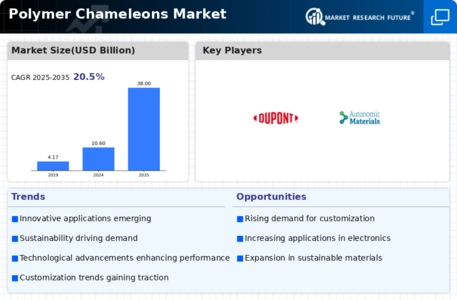Polymer Chameleons Size
Polymer Chameleons Market Growth Projections and Opportunities
It is a well-known property of smart materials called polymer chameleons that they can change color in response to outside factors like temperature, pH, or light. Some of these polymers can change their structure, shape, or other properties when they are exposed to their surroundings. These changes can be undone. Responding polymers and smart materials are becoming more popular in many fields, such as healthcare, packaging, clothing, and more. This means that polymer chameleons are in high demand. Polymer Chameleons have a considerable market in the biomedical industry, notably in the process of designing drug delivery systems. It is possible to build these polymers such that they release medications in reaction to certain physiological situations inside the body. .This makes it possible for medicines to be distributed in a controlled and measured way. More advanced drug transport methods and personalized medicine solutions are driving the use of polymer chameleons in the health field. Polymer chameleons can change colors to fit different situations, like temperature and moisture. This makes them useful for environmentally friendly packing. This makes it possible to make smart packages that can show if the product has been messed with, how fresh it is, or how it is kept. For the purpose of producing color-changing textiles, the textile industry makes use of polymer chameleon tools. These materials can change color when the temperature changes, which makes clothes and items more creative and fun. The textile industry uses polymer chameleons because users want one-of-a-kind and customized fabrics and the fashion industry wants to add smart and interactive parts. The creation of responsive coatings and intelligent surfaces includes the use of polymer chameleons. These coatings have the ability to adjust to changes in the environment, providing capabilities such as self-healing, anti-fouling, or resistance to corrosion (corrosion resistance).
Maintaining compliance with safety standards and procedures is very necessary for the acceptance and marketing of a product. It is necessary for industry stakeholders to handle regulatory limits, find solutions to safety problems, and work toward the establishment of standards for the use of polymer chameleons in a variety of applications.






Leave a Comment